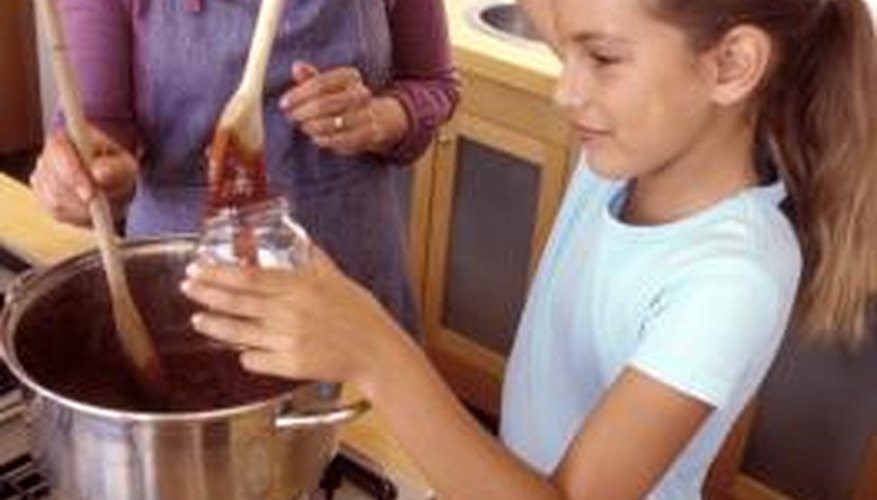Jelly sets and solidifies using a gelling agent, such as pectin, a plant-based carbohydrate -- or gelatin, an animal-based byproduct of collagen. Dissolving jelly requires the introduction of heat and a liquid, ideally water, to break down the bonds that link the amino acid chains of the gelling agent to the water molecules. There are several culinary purposes for dissolving jelly, such as quick pastry fillings or glazes, as well as different levels of viscosity: heavy, similar to thick gravy, medium, like molten chocolate and light, as in nape -- when a liquid coats the back of a spoon without running.
- Jelly sets and solidifies using a gelling agent, such as pectin, a plant-based carbohydrate -- or gelatin, an animal-based byproduct of collagen.
- There are several culinary purposes for dissolving jelly, such as quick pastry fillings or glazes, as well as different levels of viscosity: heavy, similar to thick gravy, medium, like molten chocolate and light, as in nape -- when a liquid coats the back of a spoon without running.
Determine the viscosity you wish to achieve -- heavy, medium or light -- for the application.
Heat 1 tbsp of water over low heat in a saucepan per cup of jelly for a heavy viscosity; heat 1-1/2 tbsp of water per cup of jelly for medium viscosity; heat 2 tbsp of water per cup of jelly for light viscosity. Add the jelly to the saucepan.
Stir the jelly as it warms and break up any lumps to facilitate dissolving. Heat the jelly until dissolved, approximately four minutes.
Remove the jelly and allow it to cool. Judge the thickness upon cooling -- and if necessary -- return to low heat and add 1 tsp of water to continue thinning it out. To thicken the jelly, return it to low heat and reduce it, until the desired consistency is reached.
